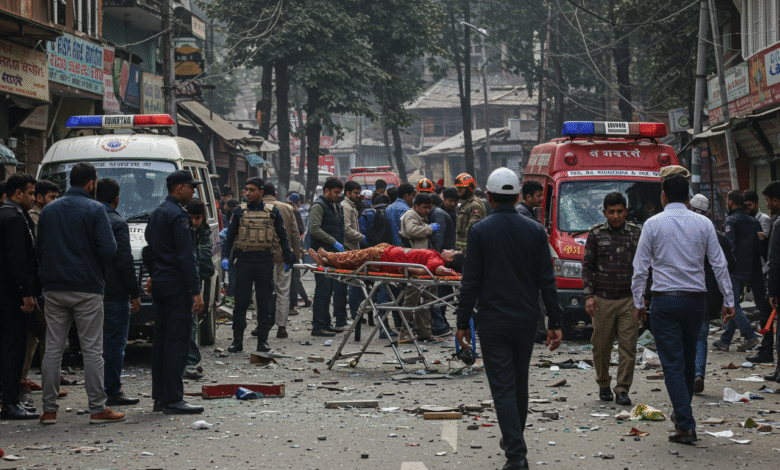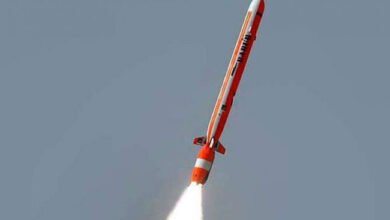The Pahalgam Terror Attack: A Tragedy That Shook Kashmir

1. Introduction
Setting the Scene
Nestled in the picturesque Anantnag district of Jammu and Kashmir, Pahalgam has long been a haven for tourists seeking solace amidst the Himalayan beauty. Known for its lush meadows, serene rivers, and the famed Amarnath Yatra route, Pahalgam epitomizes the tranquility of the Kashmir Valley. However, on April 22, 2025, this idyllic landscape was marred by an unprecedented act of violence that left the nation in shock.You know about theglobespot, andaazdaily, openrendz and pahalgam terror attack also Buzzfeed.
Importance of Pahalgam in Kashmir’s Tourism
Pahalgam’s significance extends beyond its natural beauty. It serves as a vital economic hub for the region, with tourism being a primary source of livelihood for many locals. The valley’s charm has attracted visitors from across India and abroad, contributing to a vibrant cultural exchange and fostering a sense of unity in diversity.
2. The Attack Unfolds
Date and Location
On the fateful morning of April 22, 2025, five armed militants infiltrated the Baisaran Valley, a popular tourist destination near Pahalgam. The area, accessible only by foot or horseback, was teeming with visitors enjoying the serene environment.
The Attackers’ Approach
The assailants, equipped with M4 carbines and AK-47 rifles, launched a sudden and brutal attack on unsuspecting tourists. Witnesses reported that the militants segregated individuals based on their religion, asking them to recite religious verses before opening fire. This chilling act of targeted violence resulted in the deaths of 26 individuals and left over 20 others injured.
Immediate Impact and Casualties
Among the deceased were 25 tourists from various Indian states and one foreign national from Nepal. The victims included professionals, students, and families, each with their own story of aspirations and dreams. The attack not only claimed lives but also shattered the sense of security that once prevailed in the region.
3. Victims’ Stories
Personal Accounts from Survivors
Survivors of the attack recounted harrowing tales of survival and loss. One such account was from Himanshi, who witnessed her newlywed husband, Lieutenant Vinay Narwal, being gunned down by the militants. Her voice, filled with grief and disbelief, echoed the sentiments of many who lost loved ones that day.
Profiles of the Deceased
The victims hailed from diverse backgrounds, each contributing uniquely to society. Among them was Sushil Nathaniel, a Christian from Madhya Pradesh, who was fatally shot after identifying himself as a non-Muslim. His daughter, who survived the ordeal, bore witness to the brutality that unfolded.
4. The Aftermath
Emergency Response and Rescue Operations
In the wake of the attack, local residents, including members of the pony-handlers association, sprang into action. They assisted in evacuating the injured, using improvised stretchers and ponies to navigate the rugged terrain. Gurudwaras in the region opened their doors to shelter tourists seeking refuge.
Government and Military Reaction
The Indian government, led by Prime Minister Narendra Modi, condemned the attack in the strongest terms. A joint operation involving the Indian Army, paramilitary forces, and Jammu and Kashmir Police was launched to apprehend the perpetrators. The National Investigation Agency (NIA) initiated a probe into the incident, releasing sketches of the suspected militants.
Impact on Local Community and Tourism
The attack sent shockwaves through the local community, leading to protests, school closures, and a mass exodus of tourists. The once-thriving tourism industry faced a severe downturn, with many fearing further violence and instability.
5. Investigation and Accountability
Initial Claims of Responsibility
The Resistance Front (TRF), an offshoot of the banned Lashkar-e-Taiba, initially claimed responsibility for the attack. They cited opposition to Indian government policies allowing non-Kashmiris to settle in the region as their motive. However, four days later, they retracted their claim, attributing it to a communication breach.
Role of The Resistance Front (TRF)
Despite the retraction, investigations revealed that the TRF had orchestrated the attack. Intelligence agencies linked the incident to Pakistan-based operatives, with digital traces leading to safe houses in Muzaffarabad and Karachi. Forensic evidence and intelligence intercepts suggested support from across the border.
Arrests and Legal Proceedings
In the ensuing weeks, security forces arrested two hybrid militants involved in a separate attack on a tourist couple in Pahalgam. The arrested individuals, identified as Waseem Ahmad Shah and Adnan Ahmad Beigh, were found in possession of firearms and ammunition. Their apprehension marked a significant development in the ongoing efforts to dismantle militant networks in the region.
6. Political and Diplomatic Repercussions
India’s Response
India held Pakistan responsible for the attack, citing alleged cross-border terrorism. In retaliation, India suspended participation in the 1960 Indus Waters Treaty, expelled Pakistan’s military attaché from Delhi, and canceled Pakistani visas. The Wagah border, the only legal land crossing between the two nations, was set to close, leading to emotional and logistical distress for families split across the border .
Pakistan’s Denial and Reactions
Pakistan denied involvement in the attack and called for a neutral investigation. In response to India’s actions, Pakistan suspended visas issued to Indian nationals and closed its airspace to Indian aircraft. The situation escalated with skirmishes
6. Political and Diplomatic Repercussions (continued)
Pakistan’s Denial and Reactions
Pakistan denied involvement in the attack and called for a neutral international investigation. The country’s Foreign Office issued a statement condemning the killings but emphasized that there was “no evidence linking Pakistani soil” to the militants involved. Despite this denial, tensions between the two nuclear-armed neighbors escalated rapidly.
In response to India’s suspension of the Indus Waters Treaty and diplomatic expulsions, Pakistan retaliated by halting all diplomatic dialogue, suspending cross-border trade, and closing its airspace to Indian aircraft. This tit-for-tat escalation raised fears among the international community of another potential military confrontation between the two countries.
International Community’s Stance
Global powers responded swiftly. The United States, United Kingdom, and France condemned the attack and called for de-escalation. The United Nations expressed concern about rising tensions in South Asia and urged both nations to resume dialogue.
Human rights organizations, meanwhile, demanded an impartial probe and stressed the need to safeguard civilian lives in the region. Calls for international mediation were renewed, but both India and Pakistan rejected third-party involvement, holding firm to their positions.
7. Media Coverage and Public Perception
National and International Reporting
The Pahalgam terror attack dominated news cycles for weeks. Indian media outlets covered the tragedy in depth, with live updates from ground zero, emotional interviews with survivors, and panel discussions on counterterrorism and national security.
International outlets such as BBC, Al Jazeera, and CNN provided broader geopolitical analysis, exploring the implications for Indo-Pak relations and the impact on Kashmir’s fragile peace. While some focused on the brutality of the attack, others highlighted the human resilience and communal harmony displayed by locals who came to the aid of victims.
Social Media’s Role
Social media was flooded with hashtags like #PahalgamAttack, #KashmirTerror, and #StandWithVictims. Eyewitness accounts, videos, and photos circulated widely, evoking outrage and sympathy in equal measure. However, the platform also saw its share of misinformation and inflammatory content, which required quick fact-checking and moderation by platforms.
The digital space became both a medium of mourning and a battlefield of narratives, with competing viewpoints about the root causes of terrorism in Kashmir and the role of state and non-state actors.
Public Sentiment in Kashmir and Beyond
Interestingly, despite the political undertones, many Kashmiris condemned the attack. Local community leaders, traders, students, and clerics expressed their sorrow, emphasizing that violence had no place in their homeland. Across India, candlelight vigils, peace marches, and memorial services were held to honor the victims.
The national mood was one of grief, anger, and resolve — grief for the lives lost, anger at the impunity of militants, and resolve to not let terror define the narrative of Kashmir.
8. Historical Context
Kashmir Conflict Overview
The Kashmir conflict has deep historical roots, dating back to 1947 when the princely state of Jammu and Kashmir acceded to India. Since then, it has been a flashpoint for three wars between India and Pakistan and the epicenter of prolonged insurgency and civil unrest.
Militancy in the region intensified in the late 1980s, with separatist groups demanding either independence or merger with Pakistan. India maintains that Pakistan supports cross-border terrorism, while Pakistan claims to support “freedom fighters.”
The Human Cost
Emotional and Psychological Impact
The attack left a deep psychological scar on survivors and families of the deceased. Many of the survivors developed symptoms of post-traumatic stress disorder (PTSD), including nightmares, survivor’s guilt, and anxiety. Children who witnessed the violence were provided trauma counseling by NGOs and mental health professionals.
Wives lost husbands, children lost parents, and families were torn apart in seconds. The incident reawakened old fears for many Kashmiris who had experienced violence in previous decades.
Long-term Effects on Victims and Families
Beyond the emotional toll, the financial impact was devastating. Sole breadwinners were lost, students dropped out of school, and families struggled with medical bills. While state governments announced compensation and job offers for the kin of the deceased, implementation lagged behind promises in some cases.
Support groups and civil society organizations played a crucial role in providing assistance, from legal aid to trauma therapy and educational support for orphans.
Community Healing and Resilience
Amid the darkness, stories of human kindness stood out. Local Kashmiris opened their homes to injured tourists. Pony-handlers and villagers turned into first responders, offering food, shelter, and transport.
Religious leaders from all communities united in condemning the violence and held joint prayers for peace. The attack, while divisive politically, became a rallying point for interfaith unity and solidarity on the ground.
Conclusion
Lessons Learned
The Pahalgam terror attack was a grim reminder of the persistent threats faced by India in its most sensitive regions. It exposed gaps in surveillance, the challenge of hybrid militancy, and the urgent need for intelligence reform. But it also showed the resilience of people — both locals and tourists — who refused to be broken by hate.
Path Forward for Kashmir
A peaceful Kashmir requires more than just military solutions. Economic development, youth engagement, and community empowerment must form the cornerstone of any lasting peace strategy. Trust-building between communities, interfaith dialogue, and fair political representation are equally crucial.



